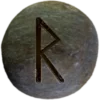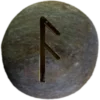Last Updated on November 27, 2024


Grímnismál (pronounced: GREEM-nees-mahl) means “The Sayings of Grímnir” and appears in the Poetic Edda. This poem provides a wealth of information about the gods, their dwellings, and the structure of the world. “Grímnir” is one of Odin’s many names, meaning “The Masked One,” which reflects his disguise during the events of the poem.
The poem begins with Odin visiting King Geirröðr while in disguise. The king, suspicious of Odin’s identity, captures and tortures him. Bound between two fires, Odin endures for eight days without food or drink. On the ninth day, the king’s son, Agnar, brings Odin a drink. In gratitude, Odin reveals his true nature and recites a series of profound teachings.
The verses include detailed descriptions of the homes of the gods, such as Valhalla, Gladsheim, and Bilskirnir. Odin shares knowledge about Yggdrasil, the great world tree, and its importance in connecting the realms. He also speaks of the daily struggles of humanity and the divine forces shaping existence. Odin’s wisdom unveils the interconnectedness of life and the divine.
At the poem’s conclusion, Odin reveals his identity, striking terror into Geirröðr. The poem ends abruptly with the king’s death, showcasing the power and danger of the gods. Grímnismál stands out for its combination of mythological detail and moral insight, providing a comprehensive glimpse into the Norse world.
Elder Futhark Runes Associated with Grímnismál
The Ansuz rune ![]() , symbolizing divine wisdom and communication, reflects Odin’s teachings in Grímnismál. Raido, representing journeys and transformation, aligns with Odin’s disguised travels and the transformative nature of his wisdom. Both runes highlight the poem’s themes of knowledge and destiny.
, symbolizing divine wisdom and communication, reflects Odin’s teachings in Grímnismál. Raido, representing journeys and transformation, aligns with Odin’s disguised travels and the transformative nature of his wisdom. Both runes highlight the poem’s themes of knowledge and destiny.
Importance of in Asatru
In Asatru, Grímnismál holds immense value for its depiction of Odin as a teacher and guide. Practitioners study its verses to understand the Norse worldview and divine wisdom. The poem also inspires rituals and meditations on Yggdrasil and the gods, deepening the connection between followers and the sacred realms.
